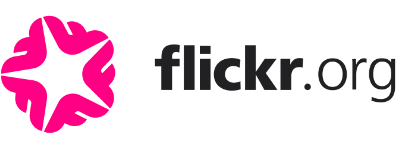This is a transcript of an interview with Katrina Harkness and Joshua Youngblood, State Library & Archives of Florida, taken from a book called Web 2.0 Tools and Strategies for Archives and Local History Collections by Kate Theimer. Reprinted with permission.
What made you interested in becoming a member of the Flickr Commons?
The Florida Photographic Collection is a nationally and internationally recognized component of the State Archives of Florida and contains over a million images which are used regularly by book publishers, TV stations, and filmmakers.
Still, the Photographic Collection felt like a hidden, undiscovered treasure. The number of photographs made searching difficult for any but the most determined researcher. If only there was a way to let Floridians and the world know that we have images of important people and events in Florida history and also a little of the unexpected: flying machines, ostrich racing, mastodon fossils, mermaids, and the largest lightbulb in the world.

Sponge diver John Gonatos: Tarpon Springs, Florida, 1945
What information, tools, and processes did you need to begin?
The first and most important step for participation was consulting with the Commons team, from initial discussions about what our institution could and should offer to strategies for organizing our content and planning updates. Since we have been placing digital images and the accompanying records online for several years, the technology learning curve was not that steep. After receiving approval from the Florida Department of State, we developed disclaimers and information for the Florida Member page based on the models established by other Commons institutions.

Photographer beside mounds of oyster shells: Apalachicola, Florida, 1895
How did you determine what to include?
The Florida Photographic Collection as a whole is composed of hundreds of smaller collections. Some collections are the world of individual photographers, and some are the work of institutions such as the Department of Commerce or the Department of Environmental Protection. We decided to work within this existing framework and highlight the images that best represented these collections. We began with self-standing collections, picking collections that were historically interesting, emblematic of Florida, and underutilized. We then added selections from two of the largest collections in the Archives, the Department of Commerce and the Florida Folklife Program. Both collections contain numerous unique, fascinating, and quirky images, but both are so large that browsing the resources can be daunting.

Pam Maneeratana displays her carved pumpkins: Tallahassee, Florida, 1987
What challenges did you face?
As a state institution, adapting our traditional communication structure to the Web 2.0 culture has been challenging. Having institutions such as the Library of Congress and the Smithsonian as models has helped tremendously.

Waves hit Navarre Pier hard during Hurricane Ivan’s approach: Navarre Beach, Florida, 2004
What kinds of positive results have you had? (And, any negative ones?)
Being part of the Commons has meant being part of a community of people who are passionate about photographs, history, and contributing to public knowledge.
Accessing millions of potential catalogs and researchers—and volunteer ones at that—is very exciting.
We experienced a steady rise in visits to the Archives photos since the Flickr release, and the feedback from the Commons viewers has been overwhelmingly positive and very gratifying. Some previously unknown information about specific photos has been provided by Flickr viewers, and we have been adding that information when appropriate to the catalog entries.
We get to see very personal reactions to the photographs that we never got from Web statistics.
We’ve had comments and tags in Spanish, Italian, Portuguese, and Japanese. People have recognized family members, childhood friends, favorite places, or seen intimate glimpses of their own towns in a different era.
About how much time does it take?
Working with the Commons team to work out the logistics for our participation and the initial launch took about four months. It can take an hour or two a day responding to questions and preparing for new batch releases.

Nation’s smallest Post Office in Ochopee, Florida, c. 1940s
What advice would you give an organization wanting to use something similar?
The opportunity to contribute unique historical resources from your institution to an international dialogue is worth the time commitment.

Underwater photography at the springs, c. 1950
See more of Florida Photographic Collection on Flickr Commons.




